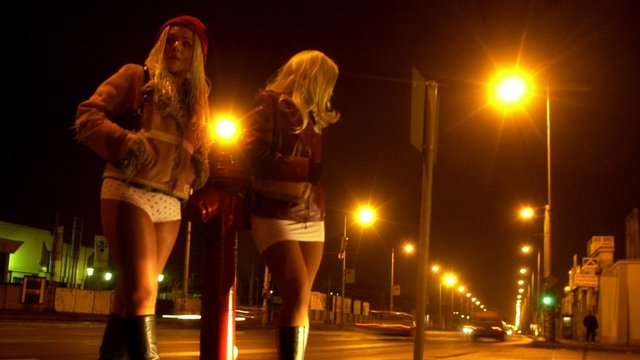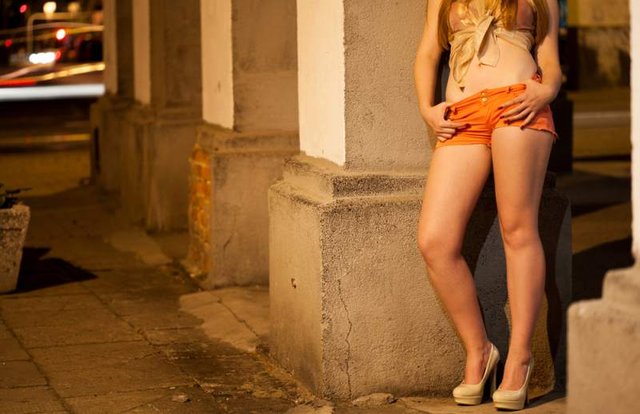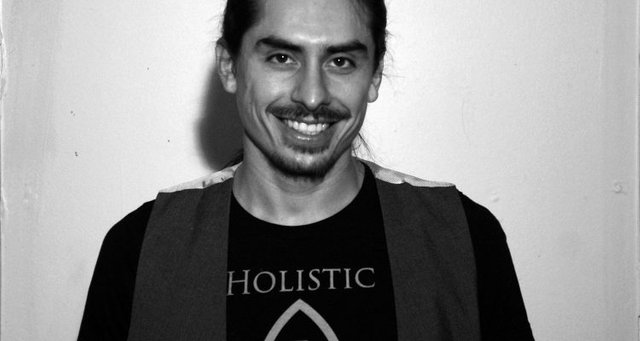Houston’s Growing Human Trafficking Industry
(This article originally appeared on MintPress News on February 4, 2017)

(AP Photo/Bela Szandelszky)
Human trafficking gets a lot of buzz around the Super Bowl, as officials and reporters warn about a spike in prostitution. But there’s little data to support this, and those fighting human trafficking warn that it distracts from the issue plaguing cities year-round.
HOUSTON — (INVESTIGATION) On Sunday Feb. 5, the Super Bowl arrives in Houston, a city plagued by a growing human trafficking industry that puts children and women at risk for physical violence and psychological abuse.
In 2011, when he was serving as the state’s attorney general and the big game was being held in Dallas, Texas Gov. Greg Abbott told USA Today, “The Super Bowl is the greatest show on Earth, but it also has an ugly underbelly. … It’s commonly known as the single largest human trafficking incident in the United States.”
While this story is retold year after year and state and federal agencies arrange massive sting operations aimed at tackling the purported spike in prostitution, there’s a growing body of pushback from those fighting human trafficking. They warn that focusing on the issue just once a year, in relation to an event like the Super Bowl, distracts from the fact that human trafficking is occurring across the country every day.
In a Jan. 31 opinion piece for The Houston Chronicle, Rebecca Pfeffer, an assistant professor in the Department of Criminal Justice at University of Houston-Downtown, wrote, “We should use the Super Bowl as a reason to raise awareness about the realities of human trafficking based on sound empirical evidence.”
The annual predictions about spikes in human trafficking specifically aren’t necessarily based on sound, reliable data. A 2016 Carnegie Mellon University study found that despite “statistically significant evidence of an influx of sex-workers” during the Super Bowl, there are “multiple other venues, events, times, and locations that show a more significant influx of sex advertising than the Super Bowl.” The authors state that this analysis provides evidence that human trafficking cannot be pinned down to a single event or location, but is instead a problem that affects the United States in a variety of locations, communities, and events.
“Subscribing to a myth about an exponential peak in human trafficking in the week surrounding the Super Bowl only serves to instill fear and misguided pity in the community,” Pfeffer continued. “Further, this myth confines community concern to one weekend, when really we ought to be greatly concerned all year long.”
Indeed, while the Super Bowl brings the issue of human trafficking and prostitution in the host city into sharp focus each year, these are issues that require attention more than once a year. Texas is no exception.
According to a recent study by the Institute on Domestic Violence & Sexual Assault at The University of Texas at Austin School of Social Work, more than 300,000 people are victims of human trafficking in Texas. That total includes “almost 79,000 minors and youth victims of sex trafficking and nearly 234,000 adult victims of labor trafficking.”
In March of 2016, Texas Assistant Attorney General Krista Melton said, “Texas is the second highest in the nation for number of calls to the National Human Trafficking Resources Center, and Houston has the highest number of trafficking victims in the nation.”
Late last month, two men were arrested on charges of human trafficking after tricking an Arizona woman into believing she had a job waiting for her in Houston, and another man saved a trafficking victim after thwarting an attempted rape.
‘We need to get out of the approach that it’s just the Super Bowl’
According to the Victims of Trafficking and Violence Protection Act of 2000, human trafficking is defined as the use of force, fraud, or coercion to obtain some type of labor or commercial sex act. The law notes, “At least 700,000 persons annually, primarily women and children, are trafficked within or across international borders. Approximately 50,000 women and children are trafficked into the United States each year.” Trafficking involves sexual exploitation, as well as forced labor often in violation of international labor, public health, and human rights standards.
The text of the law explains that traffickers often lure women and girls with false promises of a steady job with good pay, like work as a nanny, dancer, factory worker, waitress, sales clerk, or model. In some cases, traffickers buy children from poor families and sell them into prostitution or forced labor. The victims of trafficking are often disoriented due to physical violence, sexual abuse, torture, starvation, imprisonment, psychological torture, coercion, or forced drug habits. Often, they are transported away from their homes to unknown locations and unable to contact family or friends.
Houston has a long history of human trafficking. With its airports, the Port of Houston, and the city’s proximity to several major freeway systems, including Interstate 10, a major highway that cuts through the city as it stretches from Santa Monica, California, to Jacksonville, Florida, it’s become a hub for trafficking. The city’s diverse population also means that trafficking victims from abroad can be relocated to Houston without standing out among locals.
And while human trafficking generates buzz around the Super Bowl, Houston frequently hosts large oil and gas conferences, like the Offshore Technology Conference, which are known to increase demand for paid sex trafficking.
Officials have been working to combat the perception of the city as a hotbed of human trafficking as they prepare to host the most watched sporting event in the world. On Jan. 12, Mayor Sylvester Turner and law enforcement officials with the Houston Police Department, the Harris County Sheriff’s Office, and the FBI held a press conference to discuss their plans for combatting human trafficking during the Super Bowl.
“We don’t want to be known as the hub in this region for it,” Turner said.
The mayor and local law enforcement warned potential customers and traffickers that undercover officers would be out in the days leading up to the game.
As part of National Human Trafficking Awareness Month last month, Baylor St. Luke’s Medical Center in Houston held a Human Trafficking Awareness event for medical professionals. Laura Lederer, former senior advisor on Trafficking in Persons for the Undersecretary for Global Affairs in the State Department and president of Global Centurion, a nonprofit which works to combat human trafficking, spoke at the event about her experience with trafficking and how it relates to the Super Bowl.
“Any time a large conference or convention or sporting event that brings lots of men to the city without their wives or families there is a potential for demand,“ Lederer told MintPress News via email. “We need to get out of the approach that it’s just the Super Bowl, but use it to raise awareness.”
Lederer began working with women and children who had been commercially and sexually exploited in the early 1980s in San Francisco, then moved her work to Washington, D.C., in the the late 1990s. She noted the importance of the Centers for Disease Control and Prevention’s Adverse Childhood Experiences study, which demonstrated a higher incidence of health and social problems among people who experience stressful and traumatic events like abuse and neglect as children.
“What we found in our study was that those who had experienced any kind of adverse childhood event, were much more likely to be trafficked because damage is done when they are children after being subjected to these terrible events,” Lederer said.
“We found that somewhere in the 90th percentile had experienced some kind of child exploitation, assault, molestation, either in the family, in the neighborhood, or the schools, and I won’t say that led to, but it is connected to the trafficking.”
Illegal elements flood a legal industry
Houston’s trafficking problem is due, in part, to the controversial nature of strip clubs and massage parlors that dot the city. Strip clubs have a long history of battling the city’s attempts at regulation.
In 1997, City Council passed an ordinance on sexually oriented businesses, creating new restrictions on the location of strip clubs, the dimness of lighting allowed, and the type of clothing dancers could wear. It also imposed a no contact rule for customers and specified that customers must remain 3 feet away from dancers at all times.
The law prompted lawsuits between the city and several club owners that lasted for 16 years. In 2014, Houston’s former mayor, Annise Parker, struck a deal 16 clubs that would allow the clubs to bypass the 1997 law in exchange for an annual $1 million contribution to the newly created Human Trafficking Unit of the Houston Police Department.
Mayor Parker called the deal “a partnership to prevent human trafficking,” but it came up against stiff opposition from local religious leaders and human trafficking advocates, who argued that the city was simply turning a blind eye to illegal activity within the clubs. The deal still requires these clubs to report incidents of prostitution, drug use, and indecent exposure.
Whether or not the partnership has resulted in a decrease in human trafficking remains to be seen, but at least one man within the industry is willing to say that human trafficking is still a problem at Houston’s clubs. “Alex” has worked in Houston’s adult entertainment business for the last 12 years as both security and management. He agreed to speak to MintPress on condition of anonymity.
“I have witnessed all sort of illegal activities such as drug sales, prostitution, pimping, and sex trafficking,” Alex told MintPress. He also described witnessing many of the same behaviors identified within the Victims of Trafficking and Violence Protection Act of 2000.
“After working in the industry long enough you can easily distinguish the girls who are being forced to do sex work,” Alex said. “Some of their characteristics include working in groups, coming and leaving work together, as well as being very guarded about speaking anything about their personal life.”
He also said the women sometimes arrive and depart separately to appear independent of each other, when in reality they are all living together under force, fraud, or coercion. He described witnessing women who are malnourished, possibly drugged, and in a “state of hopelessness.”
Alex also noted that the signs and evidence are obvious for those willing to look:
“I cannot say I witnessed it [trafficking] firsthand. It is simply a known fact that can be seen through deductive reasoning after years in the industry. The signs and evidence are there.”
Laura Lederer said that what Alex described was “a classic form” of trafficking. She continued:
“Some of these young women and girls think that the business is legitimate so nothing will happen to them and then there are all these bad things happening behind the scenes. If it happens behind closed doors, unless someone says, ‘Here is what is happening,’ nobody will know.”
Child trafficking in Houston

(AP Photo)
Houston’s trafficking problem exists well beyond the walls of the city’s strip clubs and massage parlors, though. There is also the issue of trafficking involving children between the ages of 11 and 17 who can be found soliciting sex on the streets. In January, the Harris County Attorney’s Office announced a new plan to go after 25 businesses suspected of trafficking.
“The enslavement of women and children and forcing them to work as prostitutes is just plain evil,” Harris County Attorney Vince Ryan said at a press conference.
At the same press conference, Robert Sanborn, president and CEO of Children at Risk, said massage parlors and cantinas cater to men who “are going out there that are buying young girls, that are buying young boys.”
The trafficking and abuse of young children is the focus of the work of Amber Cammack, a Houston-based advocate and the lead investigator in Texas for Operation Found Safe, an organization with a mission to educate and train communities on how to protect children from abduction, exploitation, and human trafficking.
Cammack became interested in fighting human traffic when a high school friend went missing. Decades passed, and her focus on human trafficking was sharpened further in 2010 after a friend’s 16-year-old daughter, Ali Lowitzer, went missing. After two years passed with no new evidence, Cammack asked Ali’s mother, Jo Ann Lowitzer, if she could take over the investigation.
“I started investigating it as a human trafficking case,” Cammack told MintPress, adding that she developed a relationship with the FBI and went undercover to “trap houses” where young girls were being trafficked and sold.
“Ali’s case led me to uncovering hundreds of girls connected to trafficking rings I was already investigating,” Cammack, who has also done narcotics and human trafficking training with the Department of Homeland Security, said.
She said traffickers use a variety of methods to physically and psychologically trap victims.
“They gain their loyalty by getting them addicted to drugs,” she explained shortly after returning from rescuing a 12-year-old girl from the streets of Houston. “These kids are introduced to the practice by other children. Children as young as 11, but on average between 12 to 17.”
Despite the attempts and successes of Houston and federal law enforcement, trafficking continues to bring in billions of dollars a year. In May of 2015, President Barack Obama signed the Justice for Victims of Trafficking Act of 2015, which increased federal funding for law enforcement to fight trafficking and penalties for those proven to have sold or bought a trafficked person, engaged in sexual abuse, child pornography, child sexual exploitation, interstate transportation for illegal sexual activity or commercial human smuggling.
At the time of Obama’s signing, Yasmin Vafa, director of Law and Policy for the nonprofit Human Rights Project for Girls, said the bill was the first “federal law on the books that specifically addresses domestic human trafficking and prioritizes the need to confront the demand for child sex.”
Cammack said she believes that the legal system and law enforcement are largely incapable of helping victims of human trafficking.
“Our justice system was not created to fight human trafficking, it was not created to solve a trafficking case,” she said. “The law is black and white, and human trafficking cases are not.”
She blamed a lack of resources, funding, and training in Houston-area law enforcement for a lack of efficient policing of human trafficking. She also accused the city’s police officers of returning children to their pimps or putting them out on the streets without properly investigating.
“My purpose is to give the victims a voice. To speak out against police departments that are just labeling these cases with a number and moving on.”
Donate via:
Bitcoin: 16fDdrZvt9XUv7TyboSYtaHfcxMb22Yiew
Ethereum: 0x8d20b442de44C28467b3d66939ff3077F9CfCb24
DASH: XbPpwz1ZvtkTeik1y3wDgrHRJTEst564XH
I am always available for interviews, Please contact [email protected]
I greatly appreciate any support here or on my other social media:
| YouTube | Facebook |

I wonder how much of an influx of human trafficking occurs during the arrival of the pope? Elite portions of society are rampant w/pedophiles. No need to call out "your holiness." I think everyone should consider when even religious leaders are tempted, how come it's so hard to comprehend the rest of high society? Good write-up!
I can't help but notice, no event portrayed as a "boon" to attract sex offenders, ever is recognized for long and the issue sort of swirls around til the next event occurs and is recycled. Sad stuff....
Oh man the way things are heading it is getting really scary. The wife and I often talk about the world our children are going into, and they need to be preapred for these things at such a young age.
I personally believe there is a 'new' (since it has been deployed for centuries) currency in the world, and this is converting human life into profit.
In some cases this is legally done, and we have massive corporations that will exploit, mistreat and abuse those that work for them for massive profits, to the seedy underbelly of the world where women and children are treated as little more than commodities in sex, slavery, drugs and abuse in a world saturated by hedonists after their next easy score.
It really makes one want to run and hide in a small remote village away with no WWW.
So from my side, thank you to those as yourself that fight the good fight! All the best to you
Thank you for sharing information. I like your article, very interesting to read. In my opinion, not only in that country only human trafficking takes place, but in my country too, there is still a lot of human trafficking that has not been solved by the government. Prostitution in my country is also getting more and more due to the greatly reduced employment. It may all be prevented by the government by opening employment. Thus the welfare of the people will be guaranteed.
Oh
The people need people like you telling it the way it is. My eyes have need you. I followed you too. Peace. Great article.